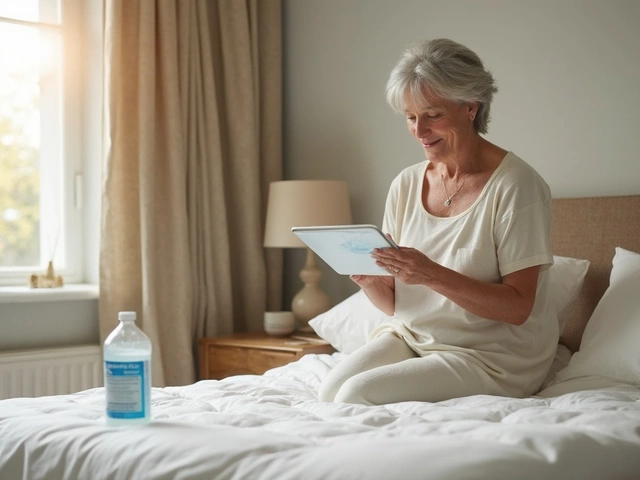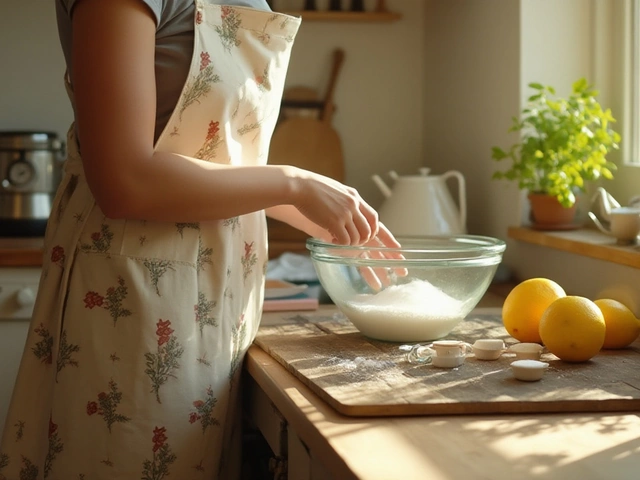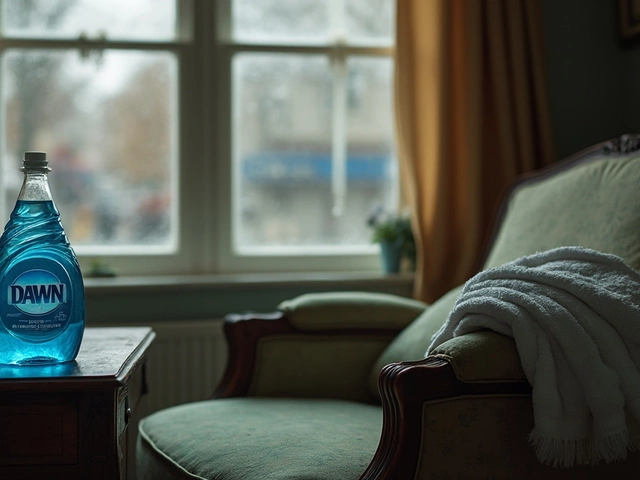Limescale vs Wear and Tear Identifier
Click "Analyze Deposit Type" to determine if the deposit is limescale or wear and tear based on your selections.
Quick Guide to Interpretation:
- Chalky/White Deposits on heating elements or inside appliances = Likely Limescale
- Scratches, Fading, or Worn Seals = Wear and Tear
- Gritty Texture = Strong indicator of limescale
- Soft or Crumbly Texture = Wear and Tear
Seeing a fuzzy white film inside your kettle or on the showerhead often sparks a debate: is that just the natural ageing of the appliance, or is it a sign of something else? The answer hinges on understanding what limescale a hard, chalky deposit of calcium carbonate that forms when mineral‑rich water is heated or left stagnant really is, and how it differs from ordinary wear and tear. This guide walks you through the science, the signs, and the steps you can take to keep your home running smoothly without confusing the two.
Key Takeaways
- Limescale is a mineral deposit caused by hard water, not a normal part of equipment ageing.
- Wear and tear describes the gradual loss of performance due to regular use, without mineral buildup.
- Spotting the difference saves money, extends appliance life, and clarifies landlord‑tenant responsibilities.
- Simple preventative measures-like installing a water softener-can cut limescale formation dramatically.
- When removal is needed, choose the right descaling method for each appliance to avoid damage.
What Is Limescale?
Hard water contains high levels of dissolved calcium and magnesium ions. When water is heated or evaporates, those ions combine with carbon dioxide to create calcium carbonate, the solid you recognise as limescale. The process is a chemical reaction, not mechanical wear. In the UK, especially in regions like the South West, water hardness can exceed 300mg/L, making limescale a common nuisance.
Key attributes of limescale:
- Composition: primarily calcium carbonate (CaCO3).
- Appearance: white, chalky crusts on kettles, appliances, faucets, and tiles.
- Impact: reduces heating efficiency, clogs pipes, and can cause premature failure of components.
Defining Wear and Tear
Wear and tear the inevitable degradation of a product’s parts due to regular use over time is a mechanical concept. It includes friction, fading, loosening of bolts, and general fatigue. Unlike limescale, wear and tear does not involve chemical deposits; it’s the natural aging of moving parts.
Typical examples:
- Scratched ceramic surfaces from daily cleaning.
- Seals on a dishwasher that become less elastic after years of cycles.
- Heating elements that dim in brightness because of repeated heating cycles.
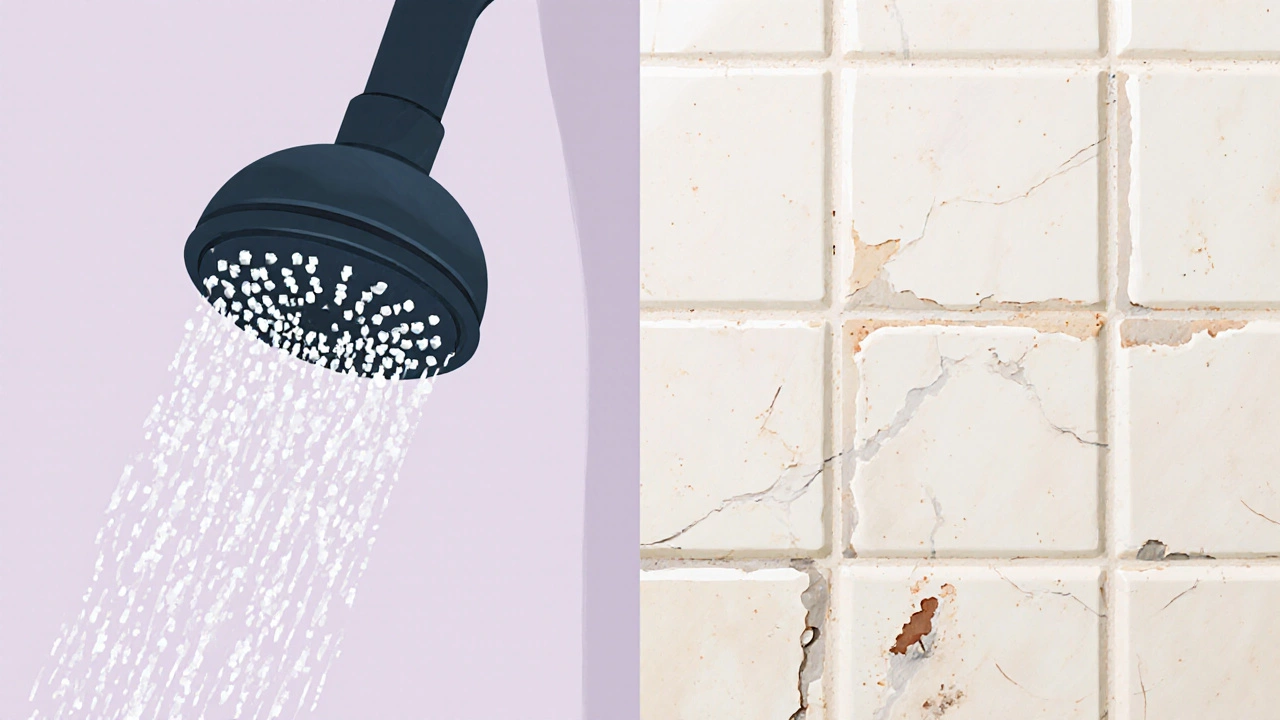
Side‑by‑Side Comparison
| Aspect | Limescale | Wear and Tear |
|---|---|---|
| Cause | Hard water minerals crystallising | Mechanical friction, heat cycles, normal usage |
| Appearance | White, chalky deposits | Surface scratches, faded colours, worn seals |
| Typical Locations | Kettle, boiler, showerhead, pipe joints | Door hinges, appliance seals, fabric upholstery |
| Prevention | Water softening, regular descaling | Routine maintenance, proper usage |
| Effect on Efficiency | Reduces heat transfer, raises energy bills | Gradual performance drop, may need part replacement |
Spotting Limescale vs Wear and Tear
Visually, limescale is easy to identify: look for powdery white buildups on heating elements, inside kettles, or at the edges of taps. Wear and tear shows up as cracks, worn rubber gaskets, or loose screws. Here’s a quick checklist to help you differentiate:
- Check the colour - if it’s white and chalky, think limescale.
- Feel the texture - limescale feels gritty, whereas worn plastic feels soft or crumbly.
- Test the water - if you have a water hardness measurement indicating high calcium and magnesium levels reading above 150mg/L, limescale is likely.
Preventing Limescale Build‑Up
The most effective defence is to intervene before minerals have a chance to settle. Consider these proven tactics:
- Install a water softener: An ion‑exchange system swaps calcium and magnesium for sodium, reducing hardness by up to 90%.
- Use descaling agents regularly: White‑vinegar or citric acid solutions work well for kettles and showerheads; commercial descalers are better for boilers.
- Run hot water briefly: Letting water flow for a minute before use flushes loose particles.
- Wipe down surfaces after each use: A quick squeegee on glass doors prevents mineral films from hardening.
These steps are cheap, easy, and can extend the lifespan of appliances by 20‑30% according to a 2023 Home Energy Survey.
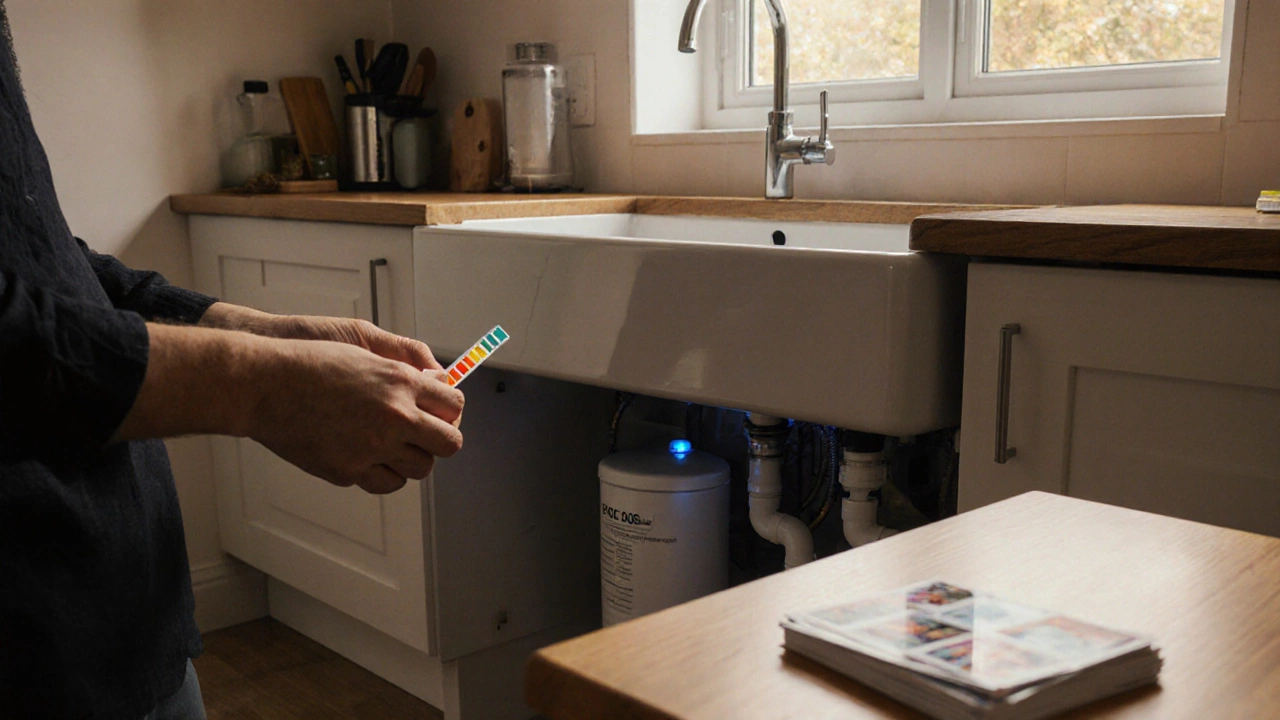
Removing Existing Limescale
When deposits have already formed, choose the right approach for each item. Below are the most common scenarios:
- Kettle: Fill half full with water, add a tablespoon of white‑vinegar, boil, then let sit for 30minutes. Rinse thoroughly.
- Showerhead: Detach, soak in a bowl of equal parts water and citric acid powder for an hour, then scrub with an old toothbrush.
- Boiler: Use a professional descaling service; DIY chemicals can damage heat exchangers.
- Tiles and grout: Apply a paste of baking soda and water, let sit, then scrub with a non‑abrasive pad.
Always follow manufacturer guidelines - aggressive acids can corrode seals, turning a limescale problem into a wear‑and‑tear issue.
Landlord vs Tenant: Who Pays?
In England, the Tenancy Deposit Scheme (TDS) guidelines treat limescale as a maintenance issue, not a tenant‑caused damage. Landlords are responsible for fitting suitable water‑softening solutions in hard‑water areas, and for regular descaling of communal appliances. Tenants, however, should carry out routine cleaning to avoid excessive build‑up.
Practical rule of thumb:
- If the build‑up can be removed with a household cleaner, it’s tenant responsibility.
- If professional descaling is required, the landlord should cover the cost.
Document the condition of appliances at the start of a tenancy with photos - it saves disputes later.
Quick Checklist for Homeowners
- Test water hardness annually.
- Install a water softener if hardness >150mg/L.
- Descale kettles and coffee makers monthly.
- Schedule professional boiler descaling every 2‑3 years.
- Keep a record of cleaning dates and methods used.
Frequently Asked Questions
Can hard water cause damage beyond limescale?
Yes. In addition to visible deposits, hard water can increase pipe corrosion, shorten the life of rubber seals, and reduce the efficiency of water heaters.
Is vinegar safe for all appliances?
Vinegar is safe for most kettles, coffee makers, and showerheads, but it can damage natural stone surfaces and certain metal finishes. When in doubt, check the user manual or use a commercial descaler labeled safe for the material.
How often should I descale my boiler?
Professional descaling every 2‑3 years is standard, but if you live in an area with water hardness above 250mg/L, an annual service is advisable.
Do water softeners affect the taste of drinking water?
They replace calcium and magnesium with sodium, which can slightly alter taste. If sodium intake is a concern, consider a potassium‑based softener or a point‑of‑use filter for drinking water.
Is limescale considered a safety hazard?
Directly, no. However, heavy build‑up can cause overheating in kettles or boilers, which may lead to fire risk or appliance failure if left unchecked.
Understanding the difference between limescale and ordinary wear and tear empowers you to protect your appliances, keep utility bills low, and stay on the right side of tenancy agreements. A little preventive care goes a long way - start testing your water today and schedule that first descaling.

